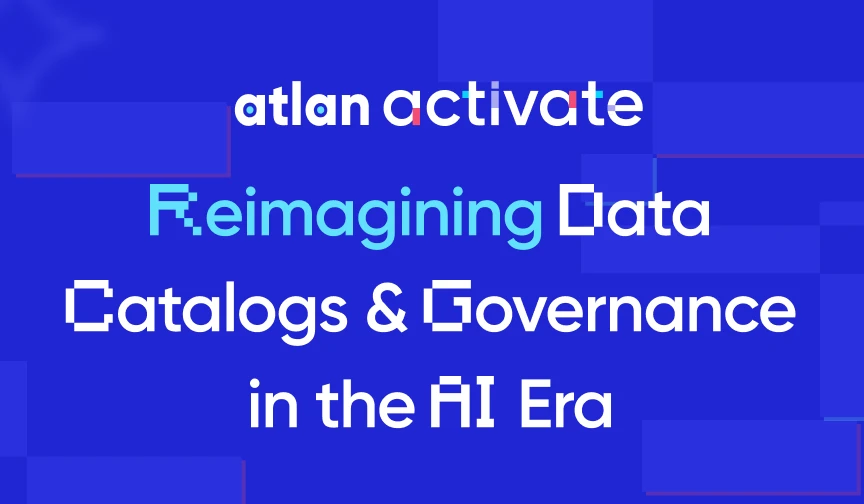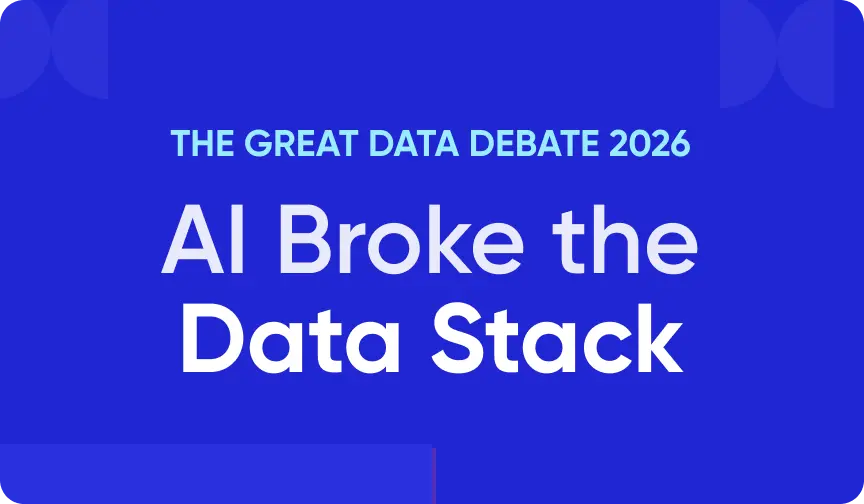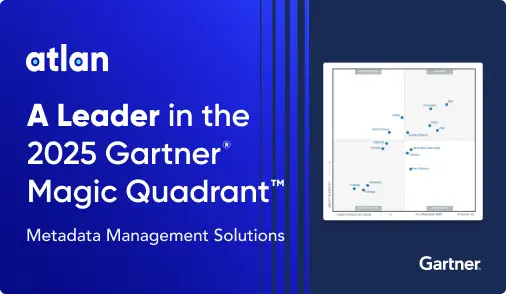Snowflake Data Quality: How to Scale Trust & Credibility in Your Data [2025]
Share this article
Snowflake data quality refers to the tools and practices that ensure data in your Snowflake environment is accurate, consistent, and reliable. With Gartner estimating that poor data quality costs organizations $15 million annually, implementing effective quality controls are essential for data-driven decisions, especially in the age of generative AI.
Scaling AI on Snowflake? Here’s the playbook - Watch Now
Snowflake offers built-in capabilities to monitor, measure, and maintain data quality, helping data teams–from CDOs to data engineers–improve their trust in data for their organization’s analytics and AI initiatives.
This article will explore:
- Snowflake’s native data quality capabilities
- How to check data quality in Snowflake
- Ways to enhance data quality monitoring with a metadata control plane like Atlan
Table of contents
Permalink to “Table of contents”- Does Snowflake have data quality monitoring capabilities?
- What are the benefits of Snowflake data quality metrics functions?
- How can you check data quality in Snowflake?
- How does Atlan support Snowflake data quality?
- Snowflake data quality: Wrapping up
- Snowflake data quality: Frequently asked questions (FAQs)
- Snowflake data quality: Related reads
Does Snowflake have data quality monitoring capabilities?
Permalink to “Does Snowflake have data quality monitoring capabilities?”Snowflake is one of the most popular and quickly growing cloud data warehouses — Snowflake projects 30% growth by 2029. According to Snowflake, data quality focuses on knowing the state and integrity of your data. To measure data quality, Snowflake offers data quality monitoring with out-of-the-box (data metric functions or DMFs) and custom metrics.
“Snowflake provides built-in system DMFs in the SNOWFLAKE.CORE schema to measure common metrics without having to define them. You can also define your own custom DMFs.” - Snowflake on its data quality capabilities
With the help of DMFs, data teams can improve their data governance posture, as:
- Data stewards can find out the current state of their data based on a particular quality metric.
- Data engineers can take immediate action on important tables and views.
- Platform administrators can ensure data quality monitoring is done efficiently, bearing cost, consistency, and performance in mind.
What are Data metric functions (DMFs) in Snowflake?
Permalink to “What are Data metric functions (DMFs) in Snowflake?”Data metric functions (DMFs) are functions applied to queries that return metrics relevant to data quality.
Snowflake comes with built-in DMFs covering standard quality metrics for accuracy, freshness, statistics, uniqueness, and volume. Built-in or system DMFs offered by Snowflake include:
- Accuracy:
BLANK_COUNT,BLANK_PERCENT,NULL_COUNT,NULL_PERCENT - Freshness:
FRESHNESS,DATA_METRIC_SCHEDULE_TIME - Statistics:
AVG,MAX,MIN,STDDEV - Uniqueness:
DUPLICATE_COUNT,UNIQUE_COUNT - Volume:
ROW_COUNT
You can also define custom DMFs based on your own data quality needs. Combining standard and custom DMFs lets you build a robust monitoring system to track the status and progress of your data quality development.
What are the benefits of Snowflake data quality metrics functions?
Permalink to “What are the benefits of Snowflake data quality metrics functions?”Using DMFs in Snowflake offers numerous benefits, such as:
- Trustworthy and credible data for decision-making
- Automated data quality checks
- Better compliance and lower risks
- Meet SLAs between data providers, data consumers, and clients
- Optimized query evaluation and performance
How can you check data quality in Snowflake?
Permalink to “How can you check data quality in Snowflake?”As mentioned earlier, Snowflake’s data metric functions (DMFs) let you set up queries that provide valuable insight into your data quality automatically.
The simplest way to set up a DMF is to use a built-in function. For example, you might want to set up a count of duplicates to be sure that you don’t have redundant records clogging up your data. Snowflake’s DUPLICATE_COUNT function lets you easily create that check.
SELECT SNOWFLAKE.CORE.DUPLICATE_COUNT(
SELECT
ssn
FROM hr.tables.empl_info
);
The FRESHNESS function is another useful built-in data quality tool, used for tracking data age. This function allows you to partition fresh data that is still relevant to active analyses from older, less-referenced data that can be stored in cheaper, slower discs.
SELECT SNOWFLAKE.CORE.FRESHNESS(
SELECT
timestamp
FROM hr.tables.empl_info
) < 300;
You can also define a custom DMF to manage data quality according to your project’s specific needs. For instance, you may need an age range check on your user accounts to comply with data privacy regulations.
Here’s how you can set up a custom DMF to identify how many records are non-compliant (i.e., outside the allowed range).
CREATE OR REPLACE DATA METRIC FUNCTION governance.dmfs.count_non_compliant_ages(
arg_t TABLE(
user_id NUMBER,
age NUMBER
)
)
RETURNS NUMBER
AS
$$
SELECT
COUNT(*)
FROM arg_t
WHERE
age < 18 OR age > 100
$$;
To run DMFs, you can either create a worksheet in Snowsight, a unified web interface for working with your Snowflake data using SQL or Python, or using a CLI like SnowSQL.
Checking Snowflake data quality using third-party tools
Permalink to “Checking Snowflake data quality using third-party tools”Several tools like Great Expectations, Soda, Anomalo, and Monte Carlo integrate tightly with Snowflake, allowing you to set up scalable and automated quality monitoring. These tools help you automatically profile your Snowflake assets, detect anomalies, trigger alerts for broken pipelines, and visualize data quality metrics.
Recently, Snowflake has invested in Anomalo to further the use of AI and ML in automatically detecting and explaining data quality issues in enterprise data.
These integrations extend Snowflake’s native capabilities, but they often operate in silos.
While DMFs and third-party tools solve parts of the data quality puzzle, they often operate in silos. Most organizations still struggle to centralize visibility, trace lineage, and tie quality metrics back to business context.
This fragmentation makes it difficult to pinpoint where and why data quality is degrading, enforce consistent policies across the ecosystem, and build trust in data across teams. That’s where a metadata control plane like Atlan becomes critical.
How does Atlan support Snowflake data quality?
Permalink to “How does Atlan support Snowflake data quality?”Atlan provides a metadata-led unified control plane for data, metadata and AI that unifies metadata, lineage, and quality metrics across your Snowflake environment and beyond.
It becomes the single source of truth that reduces silos and accelerates insights. This establishes clear ownership within streamlined data governance workflows, creating cross-organization accountability for data quality remediation.
Moreover, as Atlan integrates seamlessly with leading cloud data warehouses, teams can use Atlan to create and execute data quality checks directly within Snowflake without requiring additional infrastructure.
Here’s how it supports and extends Snowflake data quality:
- End-to-end integration with Snowflake: Atlan connects natively to Snowflake, allowing teams to define and run data quality checks (including custom DMFs) without additional infrastructure.
- Bi-directional tag sync: You can pull Snowflake object tags into Atlan’s metadata system, scaffolding them with AI-powered tag detection and automated rule enforcement.
- Real-time trust signals: Atlan surfaces automated data quality metrics and anomalies as trust signals within the data catalog, so users can quickly identify and address issues.
- Lineage-powered context: All Snowflake assets are automatically mapped with upstream and downstream lineage, making it easy to trace the source and impact of quality issues.
- Integration with data quality tools: Atlan brings in signals from third-party data quality tools like Monte Carlo, Soda, dbt, and Anomalo into a centralized trust center.
- In-platform rule creation: Users can define and manage data quality rules within Atlan’s interface and push those checks directly to Snowflake.
- Cross-functional accountability: By assigning ownership and embedding data quality into day-to-day workflows, Atlan fosters shared responsibility across teams.
By linking Snowflake with Atlan, you create a unified data quality framework across all your tools — building trust in your data no matter where it is in your system. This powerful combination creates a comprehensive ecosystem where data quality isn’t just measured but actively maintained throughout the data lifecycle.
Snowflake data quality: Wrapping up
Permalink to “Snowflake data quality: Wrapping up”Snowflake’s data metric functions help you develop, track, and enforce data quality standards. Building out data quality with Snowflake keeps your data system stable, secure, and active, accelerating analysis and activating data value.
With Atlan, you can operationalize Snowflake’s data quality tooling across your ecosystem, boosting visibility, accountability, and trust. Book a demo to see how Atlan can streamline data quality in your Snowflake workflows
Snowflake data quality: Frequently asked questions (FAQs)
Permalink to “Snowflake data quality: Frequently asked questions (FAQs)”1. Does Snowflake have built-in data quality tools?
Permalink to “1. Does Snowflake have built-in data quality tools?”Yes. Snowflake offers built-in system Data Metric Functions (DMFs) to monitor quality dimensions like freshness, uniqueness, volume, and accuracy. You can also create custom DMFs to suit your specific data quality requirements.
2. What is a Data Metric Function (DMF) in Snowflake?
Permalink to “2. What is a Data Metric Function (DMF) in Snowflake?”A DMF is a reusable query object in Snowflake that returns data quality metrics. System DMFs (like DUPLICATE_COUNT, ROW_COUNT, and FRESHNESS) are available out-of-the-box, while custom DMFs let you define organization-specific quality checks.
3. How do I monitor data quality in Snowflake?
Permalink to “3. How do I monitor data quality in Snowflake?”You can monitor data quality in Snowflake using system DMFs or by writing custom DMFs tailored to your needs. You can run these functions in Snowsight or using SQL clients like SnowSQL to track and remediate data issues proactively.
4. Can I automate data quality checks in Snowflake?
Permalink to “4. Can I automate data quality checks in Snowflake?”Yes. Snowflake lets you automate quality checks through scheduled DMFs. For more advanced automation, you can integrate Snowflake with tools like Monte Carlo, Soda, or Anomalo, or use a metadata control plane like Atlan to centralize quality signals.
5. What third-party tools integrate with Snowflake for data quality?
Permalink to “5. What third-party tools integrate with Snowflake for data quality?”Snowflake integrates with several data quality platforms such as Great Expectations, Monte Carlo, Anomalo, dbt, and Soda. These tools help you detect anomalies, monitor pipelines, and visualize quality trends in your Snowflake environment.
6. What are the benefits of combining Atlan with Snowflake for data quality?
Permalink to “6. What are the benefits of combining Atlan with Snowflake for data quality?”Atlan enhances Snowflake data quality by unifying quality checks, metadata, lineage, and governance into one control plane. It allows teams to define rules, surface trust signals, sync tags, and bring quality signals from other tools into a central trust center.
7. Can I create custom rules for data quality in Snowflake using Atlan?
Permalink to “7. Can I create custom rules for data quality in Snowflake using Atlan?”Yes. Atlan allows you to create and manage data quality rules directly within its platform and push them to Snowflake as custom DMFs. This simplifies rule management and promotes cross-functional ownership of data quality across teams.
Snowflake data quality: Related reads
Permalink to “Snowflake data quality: Related reads”- Snowflake Summit 2025: How to Make the Most of This Year’s Event
- Snowflake Data Mesh: Step-by-Step Setup Guide
- Snowflake Data Catalog: Importance, Benefits, Native Capabilities & Evaluation Guide
- Snowflake Data Governance: Features, Frameworks & Best practices
- Snowflake Metadata Management: Importance, Challenges, and Identifying The Right Platform
- Snowflake Data Lineage: A Step-by-Step How to Guide
- Snowflake Data Dictionary: Documentation for Your Database
- Snowflake on Azure: How to Deploy in 2025 [A Practical Guide]
- Snowflake on GCP: A Practical Guide For Deployment
- Snowflake Conferences 2025: Top Events to Watch Out For
- Snowflake Horizon for Data Governance: Your Complete 2025 Guide
- Snowflake Cortex: Top Capabilities and Use Cases to Know in 2025
- Snowflake Copilot: Everything We Know About This AI-Powered Assistant
- How to Set Up a Data Catalog for Snowflake: A Step-by-Step Guide
- How to Set Up Data Governance for Snowflake: A Step-by-Step Guide
- Snowflake Cost Optimization: Typical Expenses & Strategies to Handle Them Effectively
- Snowflake + Fivetran: Data movement for the modern data platform
- Snowflake + dbt: Supercharge your transformation workloads
- Snowflake Data Access Control Made Easy and Scalable
- Glossary for Snowflake: Shared Understanding Across Teams
- Managing Metadata in Snowflake: A Comprehensive Guide
- How to Query Information Schema on Snowflake? Examples, Best Practices, and Tools
Share this article





















